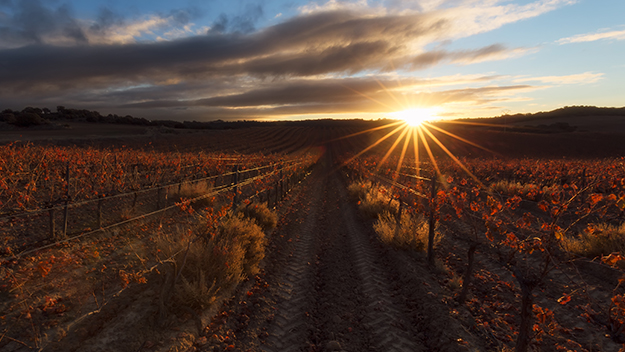Find your winery or vineyard
7 Wineries and Vineyards for sale in Greek Islands
Infographic of the Region

Greek Islands
In 2009 the EU wine market regulation came into force for all member countries with changes in AO and quality levels. The terms OPAP, OPE and OKP can still be used, but most winemakers use the new term POP.
Oinos: table wine
Οίνος
PGE: Topilos Oinos, PGI country wine. There are 80 wine-growing areas, one of the best known is Agioritikos on Mount Athos (Chalkidiki).
ΠΓΈ(Προστατευόμενης Γεωγραφικής Ένδειξης)
POP (OPAP, OPE, OKP): quality wine with PDO, other terms are also allowed.
ΠOΠ(Προστατευόμενης Ονομασίας Προέλευσης)
OPAP: PDO wine of superior quality, maximum yield, minimum alcoholic strength, barrel and bottle ageing time...
ΟΠΑΠ(Ονομασία Προελεύσεως Ανωτέρας Ποοιότητος)
OPE: quality wine with PDO subject to the same conditions as OPAP, but with higher sugar content requirements. These are sweet wines from the historical areas of Cephalonia, Limnos, Patras, Rhodes and Samos, mostly on the islands of Greece. They are naturally sweet wines made from sultanas or fortified with wine spirit.
ΟΠΕ(Ονομασία Προελεύσεως Ελεγχόμενη)
OKP: for PDO wines produced using traditional pressing methods. There are only two types of these wines, Retsina and Verdea both from the island of Zakynthos in the Ionian Islands.
ΟκΠ(Ονομασία κατά παράδοση)
With regard to the ageing of wines there is also an official classification:
Kava: high quality wine that has been stored for a long period of time. White wines minimum two years of which minimum 6 months in cask and 6 months in bottle. Red wines minimum 3 years, of which minimum 6 months in new oak or one year in used oak and 2 years in bottle.
Reserva and Gran Reserva: only allowed for OPAP and OPE quality wines. Reserva applies to wines with the same conditions as Kava. Gran Reserva applies to white wines aged for at least 3 years, including at least 1 year in oak and 1 year in the bottle, and to red wines aged for at least 4 years, including at least 2 years in oak and 2 years in the bottle.
HISTORY OF WINE
The history of Greek viticulture begins with an adventure of the gods. The supreme god Zeus and the beautiful Semele, daughter of Harmonia, gave birth to Dionysus, god of wine, joy, grapes, fertility and ecstasy. The island of Crete is considered one of the cradles of European wine culture. Wine was already cultivated in the northwest Peloponnese with the Mycenaean culture in the second half of the 2nd millennium BC in amphorae.
From the symposia of Plato, Aristophanes and Socrates to the heroes of Homer, the historian Hesiod, the philosopher Aristotle, the naturalist Theophrastus and the physician Galen, all dealt with wine and viticulture.
The Greeks spread their vine and wine culture throughout the Mediterranean through their colonisation campaigns. Sicily was known as Oinotria, southern France, eastern Spain and the Black Sea among other areas. The Celts and Romans adopted many methods. The Roman poet Vergil already described that there were many varieties of grapes: ‘It would be easier to count the grains of sand in Greece than the different varieties of grapes’.
In the Middle Ages, under Venetian rule, sweet wines from the Aegean arrived in the Peloponnese port of Monemvasia and were shipped from there to countries all over Europe.
After the Ottoman domination from the 15th century to the mid-19th century, a period of little development due to the Muslim prohibition of alcohol, viticulture only continued on a small scale on the islands where some knowledge was preserved.
Greece gained independence in 1830 and its people returned to viticulture. Among the pioneers were some Germans such as Gustav Clauss who founded the still existing Achia Clauss winery in 1861.
By the end of the 19th century, the vineyard area had doubled, but when phylloxera reached Greece in 1898, the entire vineyard was ruined and reconstruction was slow. It was not until the end of the military dictatorship in 1974 and Greece's accession to the EU in 1981 that viticulture was revived.
CLIMATE AND SOIL
Despite its predominantly maritime character, Greece has a very high mountainous component. The soils of limestone, granite and volcanic rock and the predominant Mediterranean climate, with short, wet winters and hot, dry summers, favour viticulture. Dry autumns produce ripe grapes with low acidity, most areas are located near the coast with moderate sea breezes. Therefore, in order to give more structure to the wines, the vineyards are deliberately planted at high altitude and north-facing to achieve higher acidity as the vegetative cycle is prolonged.
GRAPE TYPE
Viticulture is practised on a small scale on a few hectares throughout Greece, both on the mainland and on the larger islands.
The vineyard area covers some 110,000 ha, 70% of which is planted with white varieties and 30% with red varieties. There are about 300 autochthonous varieties, which account for 85% of the area. Only in some cases foreign varieties are allowed in quality wines. Table grapes and sultanas (sultanas) are also produced, the most important variety being Korinthiaki.
WINES AND WINERIES
Retsina, the resinous wine (Rexine is resin) is one of the most famous wines of Greece which was produced in ancient Hellas, the centre of present-day Thessaly. Due to the heat of the climate, the amphorae were sealed with pine resin or a resin-oil coating was applied to the surface of the wine. This resin method is still used today for white, red or rosé wine along with Verdean wine from the Ionian island of Zakynthos.
The most common wine is white retsina from the Savatiano variety, also from the Roditis grape on the island of Rhodes and with the Moscato Aspro variety on Samos. Kokkineli rosé wine is made from a blend of Savatiano and Mandilaria grapes. The red wine is made exclusively from the Mandilaria variety.
The traditional preference for the resin type wine is real, Retsina alone produces about 10% of the Greek wine production. Natural and fortified sweet wines are produced on almost all the Aegean islands, the best known being the sweet wine of Samos. Ouzo, an aniseed-flavoured spirit, and Metaxa, a herb-flavoured spirit, are also known.
The most important producers are Achaia Clauss, Biblia Chora, Boutari, Calligas, Cambas, Domaine Carras, Gaia, Hatzimichalis, Katsaros, Kechri, Kourtakis, Malamatina, Mercouri, Oen oforos, Papaïoannou, Parparoussis, Pavlidis, Skouras, Spiropoulos, Tsantali, Tsele pos.
Discover more wineries and vineyards for sale in these wine regions in Islands
Subscribe to our mailing list to receive news about wineries and vineyards.










